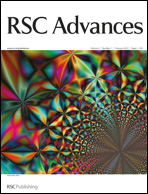Voltage sag, regain and their stabilization phases were evaluated with time across load (closed circuit) and absence of load (short circuit) to understand the stability of the bio-electrochemical system (BES) under varying organic loads (OL). Closed circuit operation showed good stability along with the electrogenic activity over short circuit operation during both the sag and regain phases due to the regulated electron flow in the closed circuit. Relative change in voltage with time (dV/dt) was observed to be decreasing with increasing OL in the zone of sag, while it was observed to be increasing with increase in OL during the zone of regain. However, the change in dV/dt was not proportional with increasing OL during both the sag and regain phases indicating the influence of OL on the biocatalytic activity. Bio-electrocatalytic evaluation through Tafel analysis showed a gradually decreasing reductive slope from OL1 (0.62 V/dec) to OL4 (0.516 V/dec) indicating higher electrocatalytic activity towards reduction. While, the oxidative slope increased from OL1 (0.085 V/dec) to OL2 and was almost similar with further increment in the OL (0.099 ± 0.002 V/dec) which indicates marginal change in the electrocatalytic activity during oxidation even with increasing OL. Exchange current density from Tafel analysis was also observed to increase with increase in OL (OL1, 7.86 mA m−2; OL2, 8.33 mA m−2; OL3, 9.59 mA m−2; OL4, 11.77 mA m−2). Polarization resistance showed a decreasing trend with increasing OL (OL1, 12.23 Ω to OL4, 9.8 Ω) resulting in higher electron transfer.

You have access to this article
 Please wait while we load your content...
Something went wrong. Try again?
Please wait while we load your content...
Something went wrong. Try again?


 Please wait while we load your content...
Please wait while we load your content...